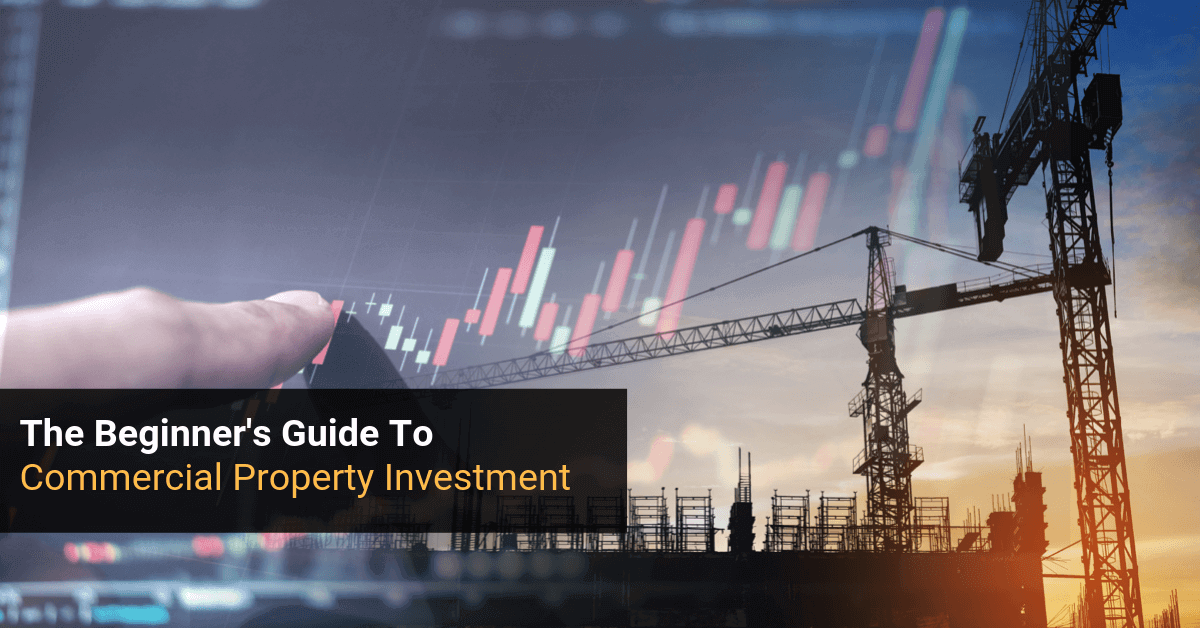
Most property investors in Australia start with residential property investment. However, as you get past your first (or second) property, commercial property investment may hit your radar, and for good reason:
Commercial property offers investors attractive benefits, including much higher rental yields and diversification, but also an increased level of sophistication that calls for deeper analysis, including the aspect of property marketing.
This article will help you understand the fundamentals of commercial property investment, including the critical role of property marketing in maximizing the potential of your investment. If this is something you’d like to explore further, we will delve into effective strategies for marketing your commercial property to attract the right tenants and investors.
Key Benefits Of Commercial Property Investment
Commercial property investment offers a number of attractive benefits, including:
Substantially Higher Rental Yields

But the average commercial property can generate rental yields of 8% to 12%.
It’s chalk and cheese.
Long Term Leases

With commercial property, a 3-year lease would be considered short.
5 or 10 year leases are not uncommon, as well as variations such as a “5 plus 5” (e.g. 5 years, with an option to renew for another 5 years).
Once you have a stable tenant in place, it’s solid long-term cash flow.
Regular Rental Increases

Either a set rate (e.g. 3% or 4% per year, or whatever you negotiate), or a rate that is indexed to the CPI, are common approaches.
This can really add up.
Let’s say you have a commercial property that you rent out for $80,000 per year.
If you increase the rent automatically by 4% per year, in 10 years, the rent will be $118,419. Not bad.
This factor can easily turn a cash flow negative commercial property into a cash flow positive one over time.
Lessee Makes Improvements

In a softer leasing market, the landlord may offer to perform certain parts of the fit out as a signing incentive (or in exchange for a longer lease term, or higher rent).
At the end of the lease, the landlord usually has the option of keeping the fitout in place, or asking the tenant to return the property to its former state. (Called a “make good”).
Lessee May Some Or All Of The Outgoings

With commercial property, it is more likely that the tenant will pay the outgoings.
Where a lease is a Gross Lease, the tenant pays one fixed amount monthly and does not contribute to outgoings.
Alternatively, a Net Lease is where the tenant pays a base rent amount, plus a contribution to the outgoings.
Diversification

So if you own 3 residential properties (especially in the same location), you may be subject to more dramatic swings in the market due to holding similar properties.
However, when you hold one or more commercial properties, the effect is often to balance out the cycles in your portfolio, giving you smoother sailing overall.
Better Maintenance and Upkeep

This is because they are conducting business from the premises. They have customers or clients visiting that they may want to impress.
Many residential tenants are great – but on balance, they tend to be harder on a property they may only live in for a few years.
Tax Effective Ownership Structures

The equivalent for residential property (i.e. living in your own home purchased within your SMSF) is not allowed.
This can result in the best of all worlds for the business owner. They have a tenant that will (hopefully!) always pay the rent, and the business has a long-term home base for as long as it is required.
Wide Range Of Price Points

Most free-standing commercial buildings in a capital city would be over $1M.
However, free-standing buildings in regional centres, or strata offices in urban centres, may be available for much less.
Then there are boutique commercial investments such as city carparks that may be available for 5-figure sums.
Potential Downsides and Risks Of Commercial Property Investment
Where there are benefits, there are also risks and downsides. Here are some of the main ones:
Higher Loan Interest Rates

Perhaps this is because banks perceive greater risk with commercial property, or maybe it’s because there’s less competition for the commercial investment dollar.
In addition to higher interest rates, there may be substantial “establishment fees” or other ongoing charges.
The bottom line is that the entire lending arrangement needs to be weighed up against the overall potential return of the property.
Longer Vacancy Periods

If a glut of supply occurs at the same time as decreased demand, there will be more commercial properties for rent than there are tenants.
This is why research is so important.
When there is a high rate of vacancy in a given property type, commercial landlords normally offer a range of incentives and discounts to attract tenants.
High Rental Incentives

Rent free periods of 3 to 12 months (or more) are not unusual.
Alternatively, the tenant may provide fit out at their cost.
Another common scenario is to offer a reduced rent to get a tenant to sign on the dotted line.
The upside is that once a tenant is signed up, the lease will tend to be for the long term (providing the tenant stays in business!).
Typically Take Longer To Sell

There are a relatively large number of potential buyers at any one time. If you need to sell quickly, you may have to drop your price a little, but if you have to sell within say 3 months, it is more often doable.
However, with commercial properties, there tend to be fewer buyers on the market with the money and the urgency to buy.
So it may take 6 to 12 months to sell a commercial property.
More Complex Leases

However, commercial leases are highly variable and more complex.
Engaging a competent property lawyer to prepare your commercial lease is essential (and in many cases, the legal costs will be covered by the tenant!).
With commercial leases, everything is a negotiation. It’s crucial to read every line of your lease agreement to understand the implications down the track.
More Sensitive To Economic Cycles

Commercial property is more sensitive to economic cycles.
For example, prior to the GFC of 2008, commercial office space in city centres was generally priced at a premium – especially in the “mining states” of WA and QLD. But post-GFC, the demand for tenants dried up and vacancy rates were higher. Values fell accordingly.
This goes to show that changes in economic conditions and sentiment can move the commercial property market.
That’s why it’s so important to invest somewhere where you have reasonable confidence that a sufficient pool of potential tenants will exist in order to keep your property tenanted.
Types Of Commercial Property
Different types of commercial properties have different dynamics and therefore different investment strategies. Some of the more common commercial property types include:
- Standalone offices
- Strata offices
- Medical centres
- Retail
- Restaurants
- Mixed use (e.g. Industrial warehouse with office attached)
- Industrial (e.g. factories)
- Boutique (e.g. car spaces)
- Commercial (e.g. warehouses, scrap metal yards etc.)
Commercial Property Ownership Structures

Trust structures with a corporate trustee are common, if the property is held outside super.
If you’re a business owner, a popular structure is to purchase your business premises via a Self-Managed Super Fund, and then rent the premises to yourself.
This is essentially the same as paying rent into your retirement fund on a tax-preferred basis, rather than paying rent to a landlord.
In the right circumstances, this can be highly advantageous, and we’ve assisted many business owners to execute this strategy.
Quick Facts On Commercial Property Finance

- The maximum Loan To Value Ratio (LVR) is usually 70%.
- Commercial interest rates tend to be significantly higher than residential.
- Loan terms tend to be shorter than residential (e.g. 15 years as opposed to 25 to 30 years).
- There may be more special conditions.
- Generally, there is more complexity. Working with a good commercial mortgage broker is a must.
How To Select The Right Commercial Property
Selecting a high-performing commercial property usually comes down to research and negotiation.
On the research front, some of the key factors are:
- Ability to get a tenant – a property with a long-term tenant already in place – or strong pre-existing demand – can be highly advantageous.
- Long-term demand outlook – do you anticipate demand will remain strong? Australia’s rapidly growing population helps, but it’s also important to consider the location and sector that you are exposed to.
- Proximity to infrastructure – for example, warehouse space near a port, or medical offices near a hospital, may be in pole position for constant demand.
- Property-to-demographic match – e.g. suburbs with strong population growth may have demand for more retail space and restaurants.
The other factor is negotiation.
There are many scenarios where a developer or owner is motivated to sell a commercial property, and with keen eyes, a shrewd investor can swoop in and buy under market value.
As we mentioned above, commercial property tends to be less liquid than residential, so if the seller wants to sell more than you want to buy, you have the upper hand. Keeping your eyes open for such opportunities can give you a distinct advantage in the market.
In Conclusion
Commercial property investment offers plenty of opportunity for more experienced investors.
We recommend that multiple-property owners consider commercial property as a means to generate higher yield and tap into diversification.
Apart from the special case of SMSF investment by a business owner, we wouldn’t recommend commercial property investment for first-time investors. Go residential first.
Commercial properties are a bit more like an ocean liner, as opposed to a speed boat.
They are typically more expensive to buy and harder to tenant, but once you have a solid tenant in place, they are practically a license to print money.
If you’d like our assistance formulating and executing a commercial property investment strategy, including effective property marketing techniques, get in touch to arrange a Property Investment Strategy Session. Our comprehensive approach not only focuses on investment analysis and acquisition but also emphasizes the importance of property marketing to maximize the visibility and appeal of your investment in the competitive market.
